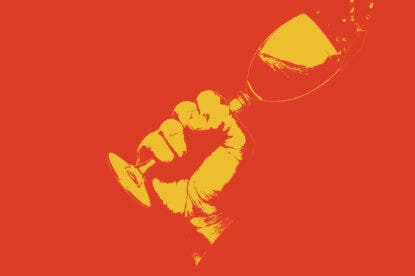Trying to make sense of a well-stocked beer fridge or tap list can be daunting. There are recipes for more than 100 beer styles, plus countless variations. Many breweries also experiment, which blurs distinctions further.
Who defines beer styles like Pilsner, India pale ale and stout? The Beer Judge Certification Program (BJCP) issues style guidelines for nearly 100 types of beer, mead and cider. Most brewers and homebrewers use these to sketch out recipes.
The Brewers Association (BA) also provides its own guidelines, which differ slightly from those of the BJCP. Its definitions are used by judges at the annual Great American Beer Festival and the bi-annual World Beer Cup.
To understand the differences among popular beers and their many iterations, it helps to learn the hallmarks of a few major styles and how they fit into two categories.
Ales and Lagers
All beer falls into two styles: ales and lagers. Yeast is the difference here. In lagers (saccharomyces pastorianus), yeast gathers at the bottom of the tank during fermentation. Lagers are usually crisp, clean and refreshing. With ales (saccharomyces cerevisiae), the yeast gathers toward the top. These beers are aromatic and often fruity.
Another difference is timing and temperature. Ales age for just a few weeks at around 40–55°F, while lagers can age for months between 32–45°F.

Ale Styles
India pale ale (IPA) is the most popular craft beer style today. Its calling card is hops, a plant related to the marijuana family, cannabaceae. It imparts aromas and flavors like citrus, spice, tropical fruits, pine and berries.
IPAs, especially in West Coast or American varieties, are known for bitterness, as hops are added during the hot side of the brewing process.
The New England-style IPA (NEIPA) uses hops during fermentation, as opposed to in the boil. That cuts down on bitterness and gives the hops juicier aromas. NEIPAs are also often brewed with oats and wheat. They’re also unfiltered, which gives them a hazy appearance. Some are brewed with lactose and fruit purée to create a “milkshake” taste.
Imperial or Double IPAs are hopped more aggressively and have a higher alcohol-by-volume (abv) content.
Pale ales are usually lower in abv and hops than an IPA. They have a more balanced malt character, characterized like a biscuit-like flavor. Sierra Nevada Pale Ale is the most famous in the U.S., and many consider it a benchmark of the style.
Stouts are dark-colored ales made with roasted barley that impart chocolate or coffee flavors. Some are aged in Bourbon or other wood barrels for deeper and boozier character.
Guinness, a dry Irish stout, is the world’s most popular stout, known for its nitro pour with cascading carbonation effect and a fuller, softer mouthfeel. In nitro carbonation, the gas used is roughly 70% nitrogen and 30% carbon dioxide.
Other stouts include imperial, which is higher in alcohol and flavor; milk stouts, brewed with lactose; and pastry stouts, which include adjunct ingredients like cakes and pies as well as candy and fruit purées.
Many now embrace sours, which are ales that are tart, thanks to a dose of lactobacillus during the brewing process. Within the category are kettle sours and Berliner weisse beers, which are often blended with fruits that add a balance of sweetness.
Wheat beers, like hefeweizen, witbier, dunkelweizen and American wheat, are brewed with a generous amount of the grain, which adds body and flavor. Allagash White is a world-class example of a witbier.
A gose is a wheat ale brewed with salt, which gives it a savory character. It can also be blended with fruits.

Lager Styles
Lager is the most popular beer style in the world. Budweiser, Coors Light, Corona and Michelob Ultra are all lagers. These come from large beer producers, which accounts for roughly 87% of the beer marketplace in the U.S.
Many craft brewers now create their own lagers to compete with these titans. In the early days of the craft beer movement, many brewers did not have the time, equipment or space to make lagers.
A Pilsner is an easy-drinking, highly carbonated lager that gets its slight spicy note from hops. It’s named after the city of Pilsen in the Czech Republic, which popularized the style. One of the region’s most famous exports is Pilsner Urquell.
A Helles is a malt-forward lager, with crisp, cracker-like notes. It’s not sweet, and it has a low-hop bitterness on the finish.
Mexican lagers are brewed with flaked corn, or maize. Thanks to the marketing behind Corona, the world’s most famous Mexican lager, the style is often served with lime, or flavored with it.
A Vienna lager is made with toasted malts that give it an amber color. Its clean flavor showcases that malt character, plus some hop spiciness.
One outlier is Kölsch, an ale fermented at lager temperatures. This clear, golden style hails from Cologne, Germany. It has a crisp yet fruity flavor.
Beyond the Basics
This barely scratches the foamy surface when it comes to beer. There are seasonal offerings, almost endless combinations of hops, new yeast strains and just about every ingredient you can think of, from herbs and spices, to meat, fruits and vegetables.
Last Updated: June 6, 2023















